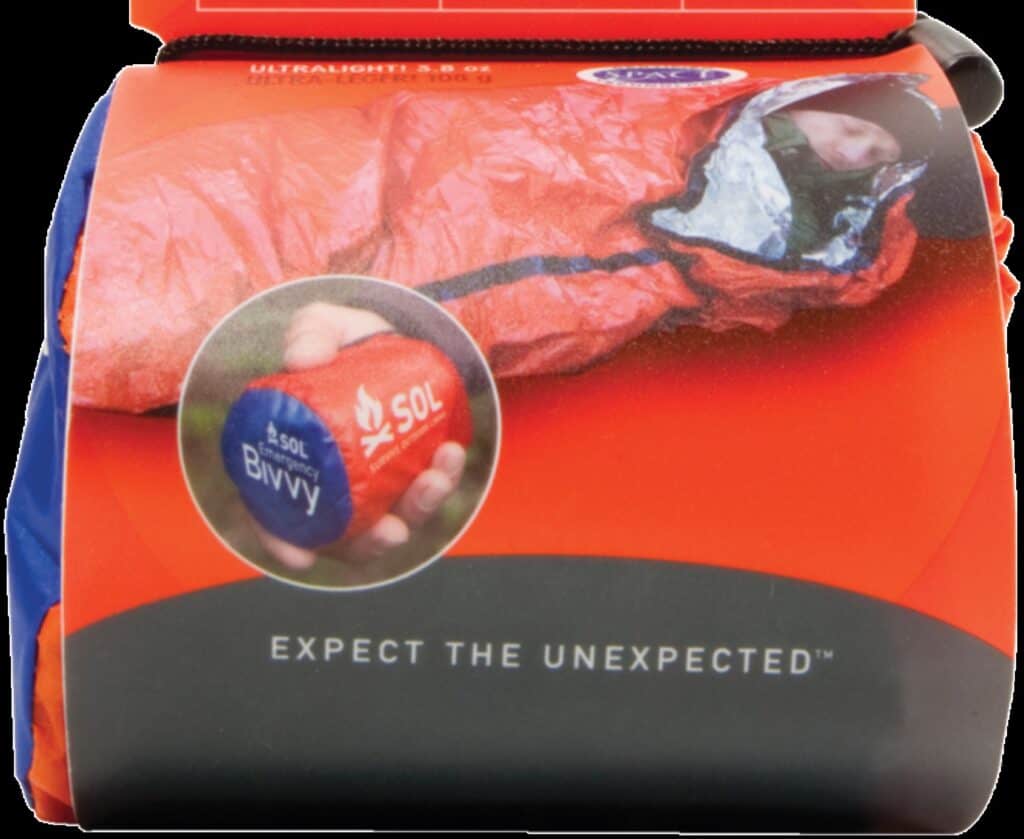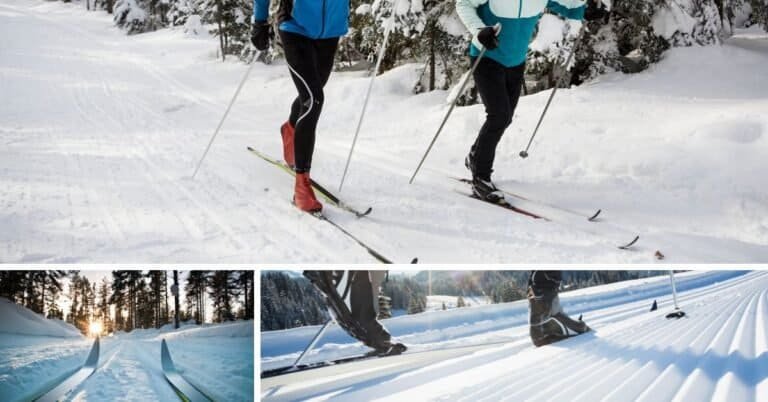Why a Winter Survival Kit is Non-Negotiable
Winter can be as beautiful as it is unforgiving. Whether you’re traveling through snow-covered terrain, dealing with an unexpected power outage, stranded in your car during a blizzard, or the road is closed due to an accident or avalanche, having a well-prepared winter survival kit could save your life. In this guide, I’ll walk you through the essential components of a winter survival kit, explain their uses, and provide tips on how to pack effectively. From core survival items like thermal blankets and food supplies to specialized tools like ice scrapers, ice cleats, and emergency lights. This article will ensure you’re fully equipped to handle winter’s harshest conditions in an emergency.
As someone who has navigated extreme winters, I know firsthand that preparation is non-negotiable. A single missing item could spell trouble, while a well-thought-out kit can offer peace of mind. This comprehensive guide not only lists items but also reveals why each is essential. By the end, you’ll have the knowledge to assemble a winter survival kit tailored to your needs and winter environment.
Why a Winter Survival Kit is Essential
Winter conditions are unpredictable. Storms can intensify suddenly, roads can become impassable, and temperatures can plummet without warning. In such scenarios, a winter survival kit is not just helpful; it could be the difference between life and death. Hypothermia, frostbite, and dehydration are real threats, and having the right supplies can mean the difference between surviving or succumbing to the elements.
Beyond emergencies, a survival kit also offers a layer of security and confidence in less extreme situations, such as unexpected delays or minor injuries while traveling. It empowers you to act decisively and effectively, reducing reliance on external help that could take hours or days to arrive.
Core Components of a Winter Survival Kit
Food and Water
Non-Perishable Food: Include high-calorie food options such as energy (protein) bars, nuts, and dried fruits. These provide sustained energy without taking up much space and do not spoil quickly.
Water: Carry at least three liters of water per person. Include water purification equipment, like a personal filter or other means of purifying water, just in case you need to melt snow to obtain more water.
Thermos: A high quality insulated thermos keeps liquids warm, providing much-needed heat and hydration. Fill the thermos with soup. That way, you will have a ready meal.
Warmth and Insulation
Thermal Blankets: Compact and reflective, these are designed to retain body heat in extreme cold.
Emergency Bivy Sack: Compact and designed to reflect body heat without carrying a full-size sleeping bag.

Hand Warmers: Disposable hand warmers offer hours of warmth for your extremities.

Insulated Clothing: Pack an extra set of socks (wool), gloves, and a Benie (toque) or insulated hat to prevent heat loss. You lose most of your body heat through your head. The best clothing material is wool, as it will still insulate if wet. Cotton is the worst material; it is a poor insulator and dries slowly.
First Aid Supplies
Basic First Aid Kit: Include essentials like bandages, antiseptic wipes, and adhesive tape.
Specific Items: Like personal medication and prescriptions in case you are stranded for an extended period.
Specialized Tools and Gear for Winter Emergencies
Winter emergencies demand tools designed for snow and ice. Here are the must-haves:
Ice Scraper and Snow Brush: These keep your vehicle’s windows clear for visibility.
Shovel: A compact, collapsible shovel can help dig out your car or create a shelter.
Emergency Light Sources: Battery-powered flashlights and headlamps with spare batteries are essential for visibility in dark, stormy conditions. Glow sticks are another option for emergency lighting.
Ice Cleats: in case you have to walk in icy conditions. You don’t want to fall and injure yourself if there’s no help near.
Additionally, pack:
Multi-Tool: For cutting, tightening, or adjusting various components.
Fire-Starting Kit: Include waterproof matches and fire starters to create warmth or signal for help.
Toilet Paper and Hygiene Products: You will want there when the call of nature comes
Small Metal Container and Tea Light Candles: These are used to melt snow to obtain more water. Do not use your body heat to melt snow, and avoid eating snow directly, as it lowers your body temperature quickly, which could lead to hypothermia.
Vehicle-Specific Winter Survival Items
Vehicles are often where winter emergencies occur. Equip yours with:
Traction Aids: Sand, cat litter, or traction mats help free stuck tires on icy surfaces.
Jumper Cables: Cold temperatures can sap battery power, making jumper cables a necessity.
Emergency Road Flares: These signal your location to rescuers and provide light.
Fuel Additives: Use additives to prevent your fuel line from freezing.
Winter Sleeping Bag: You can get inside it to stay warm or sleep in it. Make sure you have adequate ventilation if you plan on sleeping.
Packing and Storage Tips
Organized Packing
Organize your kit into labeled compartments. For instance, food and water should be placed in one section. Warmth and insulation items should be placed in another, and tools should be placed in a separate container. This ensures quick access during emergencies.
Storage Locations
Home: Keep your kit in an accessible but protected location, such as a closet near the main entrance.
Car: Store your vehicle kit in the trunk or under a seat in a durable, waterproof bag.
Workplace: Consider a small kit for your office, especially if commuting in wintry conditions.
Essential Equipment Checklist
Here’s a consolidated checklist of the items discussed:
Food and Water
- Non-perishable food
- Water bottles and purification tablets
- Insulated thermos
Warmth and Insulation
- Thermal blankets
- Hand warmers
- Extra socks, gloves, and hats
Tools and Gear
- Ice scraper
- Shovel
- Flashlights and spare batteries
- Multi-tool
- Fire-starting kit
- Toilet and Personal Hygiene Products
- Small Metal Container and Tea Light Candles
Vehicle Essentials
- Traction aids
- Jumper cables
- Road flares
- Fuel additives
- Sleeping bag
First Aid and Emergency Items
- Comprehensive first aid kit
- Personal medications and Prescriptions
Final Thoughts: Preparing for Winter’s Worst
Winter survival is about more than just enduring. It’s about thriving in challenging conditions. By taking the time to assemble and maintain a comprehensive winter survival kit, you equip yourself with the tools and confidence to face the cold head-on.
This isn’t just a preparation exercise; it’s an investment in your safety and well-being. Each item in your kit plays a role, and together, they form a robust defense against winter’s unpredictability. Don’t wait until you’re caught in a storm – prepare now and face winter with assurance.

FAQ Section
What should I do if I get stranded in my car during a blizzard?
Stay inside your vehicle, conserve fuel, and run the engine periodically for heat. Ensure the exhaust pipe remains unblocked to prevent carbon monoxide poisoning.
What’s the most essential item in a winter survival kit?
Each item is essential, but water, thermal blankets, and a means of signaling for help are top priorities.
How often should I check my winter survival kit?
Review your kit at the start of each winter season. Replace expired food, check batteries, and ensure all equipment is in working order.
Can I rely on my phone for emergencies?
While a phone is helpful, don’t rely solely on it. Batteries drain faster in cold conditions, and signal strength may be limited in remote areas.
How can I melt snow for drinking water safely?
To melt snow for drinking, use a tea light candle, a portable stove, or fire to heat it in a pot. Avoid eating snow directly, as it lowers your body temperature. Always purify melted snow with water purification tablets or a filtration system to remove contaminants.
Disclaimer: This blog post contains affiliate links




